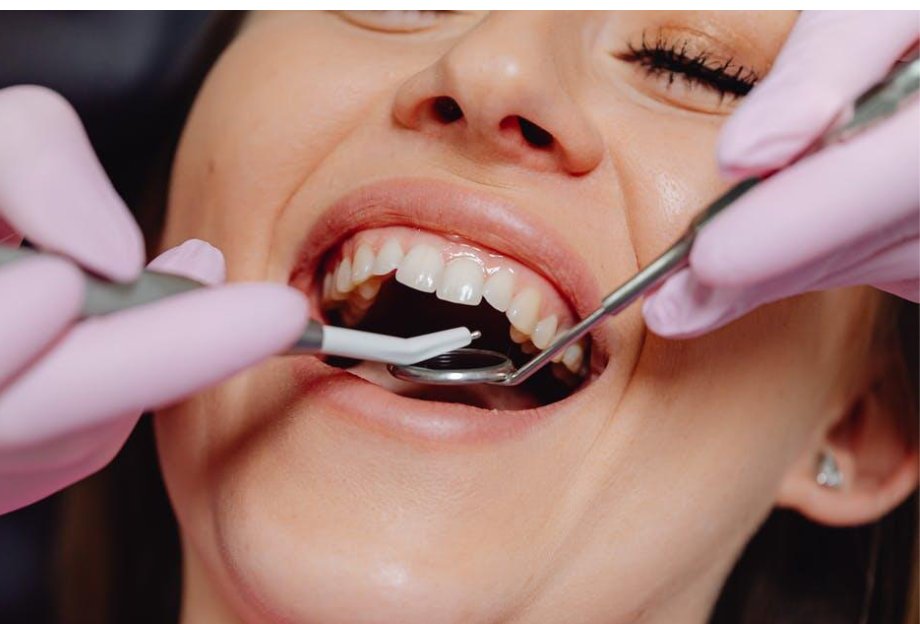The field of professional dental treatment is rapidly evolving. This is thanks to innovative technologies that are transforming patient care. There are now advanced diagnostic tools to state-of-the-art procedures. These new developments are improving precision. They also reduce discomfort and speed up recovery times.
This guide will walk you through the cutting-edge advancements shaping modern dentistry. This can be useful if you’re interested in more efficient ways to manage oral health. Discover what’s new in the world of dental technology. Learn how it’s changing the way we approach oral care. Keep on reading!
The Rise of Digital Dentistry
Dentistry is evolving. It is no longer confined to traditional methods. Today, digital technology is reshaping the field. This makes dental care more efficient and precise.
Digital dentistry uses technology to improve dental procedures. This includes tools like digital scanners, 3D printing, and computer-aided design (CAD). With these tools, dentists can perform their work with greater accuracy.
Benefits of Digital Dentistry
Digital tools in dentistry offer increased accuracy. This is done by providing precise measurements. This ensures better-fitting crowns, bridges, and implants. This leads to fewer adjustments and greater comfort for patients. It also improves the overall quality of dental restorations.
Faster procedures are another benefit of digital dentistry. For example, digital impressions are much quicker to take compared to traditional molds. This significantly reduces the time patients spend in the dental chair. It also makes the process more efficient for both patients and practitioners.
The improved patient experience is also a major advantage of digital dentistry. Traditional, bulky impression trays are no longer needed. Digital scans are quick, non-invasive, and far more comfortable. This results in a more pleasant visit to the dentist.
Advanced imaging also plays a crucial role in enhanced diagnostics. With clearer, more detailed images, dentists can detect potential issues early. This allows for preventive care that leads to healthier outcomes. It also leads to more proactive dental treatment for patients.
Key Technologies in Digital Dentistry
Intraoral scanners are transforming how dental impressions are taken. These devices create digital impressions of the mouth. It provides a fast and highly accurate alternative to traditional methods. They eliminate the need for messy impression trays. This makes the process more comfortable for patients. It also offers precise data for dental professionals.
3D printing is another innovative technology in dentistry. It allows for the rapid production of dental appliances. This includes everything from crowns and dentures to custom surgical guides. The ability to quickly fabricate these items improves efficiency. It enables same-day treatments for many procedures.
CAD/CAM technology is revolutionizing the creation of dental restorations. By using this technology, dental professionals can produce highly precise, custom-made restorations. They can tailor them to each patient’s unique needs. This streamlines the workflow. It also enhances the accuracy of products like crowns, bridges, and veneers.
Cone Beam CT is an advanced imaging technology that provides detailed, 3D views of a patient’s anatomy. This is especially useful in treatment planning for more complex procedures. For example, dental implants or reconstructive surgeries. The 3D images allow dentists to see the full structure of the teeth, bones, and soft tissues. This leads to better outcomes for patients.
The Future of Digital Dentistry
The future is promising. With continuous advancements, digital dentistry will only become more integral. More dental practices are adopting these technologies, improving care standards worldwide.
Artificial intelligence (AI) is also making its mark. AI tools help in diagnosing conditions and suggesting treatment plans. This aids dentists in making informed decisions quickly.
Laser Dentistry
Laser dentistry uses a focused beam of light to treat various dental issues. This advanced technology can be used in procedures like cavity removal, gum surgery, and even teeth whitening. Dentists use different types of lasers depending on the procedure. Laser dentistry is safe, effective, and often less invasive than traditional methods.
How Does Laser Dentistry Work?
Lasers in dentistry work by delivering energy in the form of light. They act as a cutting instrument or a vaporizer of tissue that they come in contact with. For teeth whitening, the laser acts as a heat source and enhances the effect of tooth-bleaching agents.
Benefits of Laser Dentistry
One of the biggest advantages of laser dentistry is less pain. Lasers reduce the need for traditional tools like drills. It means there is less discomfort both during and after the procedure. In many cases, patients find that anesthesia is not even necessary.
Another benefit of laser procedures is faster recovery. Since these treatments are less invasive, the recovery time is much shorter. Patients can return to their daily activities quicker compared to traditional dental procedures.
Lasers also result in less bleeding. They help in clotting blood vessels during treatments. This minimizes bleeding both during and after procedures. This is especially beneficial for gum treatments where bleeding can be more common.
Precision is another key advantage of laser dentistry. Dentists can work with extreme accuracy. They can target the specific area that needs treatment while preserving more of the healthy tooth or gum tissue.
Additionally, lasers lower the risk of infection. The laser beam sterilizes the treatment area. This reduces the chances of bacterial infection. It is particularly helpful for patients with compromised immune systems.
Are There Any Drawbacks?
Laser dentistry has many benefits, but it’s important to consider some limitations. Not all dental procedures can be performed with lasers. Also, the cost can be higher than traditional methods. Dental insurance might not cover laser procedures, so check with your provider.
Who Can Benefit from Laser Dentistry?
Most people are good candidates for laser dentistry. It is particularly beneficial for people who experience anxiety at the dentist. Children may also benefit because it can be less intimidating than traditional tools.
Exploring Teledentistry
Teledentistry is a way for dentists to examine and treat patients without them needing to visit the office. Through video calls, photos, and online chats, dentists can provide consultations and advice. This can be especially helpful for people living in remote areas or those who have mobility issues.
Benefits of Teledentistry
One of the biggest advantages of teledentistry is convenience. Patients can consult with their dentist from the comfort of their own home, saving both time and money by eliminating the need to travel. This makes dental care more accessible to a wider range of people.
Teledentistry also increases accessibility. It allows individuals who live far from a dental office to receive the care they need. This is especially beneficial for seniors or people with disabilities. It can also help those who have difficulty leaving their homes.
Another benefit of teledentistry is its cost-effectiveness. There are fewer overhead costs involved. Virtual dental visits can be less expensive than traditional in-person appointments. Patients also save on travel expenses and may not need to take time off work.
Teledentistry provides faster service as well. In some cases, it can take weeks to get an appointment with a dentist. With teledentistry, patients can often receive care sooner. This is especially important for dental emergencies or when quick advice is necessary.
How Does Teledentistry Work?
The process of teledentistry is quite simple and user-friendly. First, patients set up an appointment online, which can be done through a website or an app. This makes scheduling convenient and accessible for everyone.
Once the appointment is scheduled, the patient connects with the dentist. This is done via a video call at the designated time. During this consultation, the dentist will ask questions. This is to understand the patient’s concerns better. They may also request that the patient use a camera to show any problem areas, allowing for a more thorough assessment.
Following the consultation, the dentist provides a diagnosis if possible. They may offer advice on how to manage the issue at home or recommend an in-office visit if further treatment is necessary. This ensures that patients receive the appropriate care based on their individual needs.
If needed, a follow-up appointment can be scheduled to monitor the patient’s progress. This step allows for continued support and adjustment of treatment plans as required. This enhances the overall effectiveness of the care provided.
Challenges of Teledentistry
While teledentistry offers many benefits, it is not without challenges. For example, some dental issues require physical examination. There are also treatments that cannot be done remotely. Furthermore, not everyone may have access to the internet.
The Future of Teledentistry
The future of teledentistry looks promising. It is likely to become a regular part of dental care. It can complement traditional visits. As technology advances, teledentistry will continue to improve. It will offer even better care to patients.
In conclusion, teledentistry is a valuable tool in modern healthcare. It provides convenient, accessible, and cost-effective dental care. It can certainly enhance the way people receive dental treatment.
Augmented Reality (AR) in Dentistry: A New Frontier
Augmented Reality (AR) is not just for video games and entertainment anymore. It is making its way into many industries, including healthcare. One area where AR technology is showing promise is in dentistry.
Augmented Reality, or AR, is a technology that overlays digital information onto the real world. Imagine wearing special glasses that show you both the real world and digital images at the same time. This technology helps enhance what you see, making tasks easier and more interactive.
How AR is Used in Dentistry
Augmented Reality (AR) technology allows dentists to gain a better view of your teeth and mouth during examinations. With the help of AR tools, they can access 3D images of your teeth while assessing your oral health. This enhanced visualization aids in making more accurate diagnoses. This ensures that any dental issues are identified and addressed promptly.
AR also plays a crucial role in assisting dentists with treatment planning. For complex procedures, such as placing dental implants, AR can simulate the entire process beforehand. This capability enables dentists to plan each step meticulously and anticipate potential challenges. This ensures that the actual procedure runs smoothly for you. For example, this can be used to plan your Invisalign treatment option.
Understanding dental issues can sometimes be challenging for patients. AR serves as a valuable educational tool in this regard. Dentists can use AR to visually demonstrate what is happening with your teeth. AR can display images and animations. They can illustrate problems and proposed treatments. AR makes it easier for you to grasp your dental health situation. This improved understanding empowers you to make informed decisions about your care.
Benefits of AR in Dentistry
Augmented Reality (AR) technology enhances the accuracy of dental treatments. It enables dentists to visualize details that may be overlooked in traditional methods. This advanced capability leads to more precise treatments. This ultimately improves patient outcomes. It also ensures that each procedure is performed with greater confidence.
In addition to improving accuracy, AR contributes to time efficiency in dental practices. With enhanced planning and visualization tools, dental procedures can be completed more swiftly. This efficiency not only saves time for dentists but also minimizes the time patients spend in the chair. It leads to a more streamlined experience for everyone involved.
AR significantly enhances the patient experience during dental visits. It provides visual representations of dental issues and proposed treatments. In doing so, patients gain a better understanding of their oral health. This clarity helps reduce anxiety. It also makes them feel more comfortable throughout their appointments. It can also foster a trusting relationship with their dental care providers.
Challenges and Future Prospects
While AR offers many benefits, there are challenges too. The technology is still developing, and not all dental clinics have access to it. Additionally, there is a cost involved in adopting AR tools. However, as technology advances and becomes more affordable, we can expect more widespread use.
In the future, AR could become a standard part of dental care. Dentists and patients alike will benefit from more accurate, efficient, and understandable treatments. If you’re curious about how AR might impact your next dental visit, don’t hesitate to ask your dentist. They might already be exploring this exciting new frontier!
Exploring Professional Dental Treatments
The landscape of dental treatment is changing rapidly with these technological advancements. Each innovation aims to improve precision, reduce discomfort, and enhance overall patient care. For patients, this means more effective treatments and potentially shorter recovery times. For practitioners, these technologies provide tools to deliver better care consistently.
For more topics aside from professional dental services, check out the rest of our blog!











